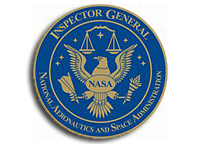OIG on Cost, Schedule, and Performance Goals
 Final Report: NASA’s Challenges to Meeting Cost, Schedule, and Performance Goals, NASA OIG
Final Report: NASA’s Challenges to Meeting Cost, Schedule, and Performance Goals, NASA OIG
“Cost increases and schedule delays on NASA’s projects are long-standing issues for the Agency. A 2004 Congressional Budget Office study compared the initial and revised budgets of 72 NASA projects between 1977 and 2000. The initial budgets for these projects totaled $41.1 billion, while their revised budgets totaled $66.3 billion, a 61 percent increase. Moreover, since its first annual assessment of NASA projects in 2009, the Government Accountability Office (GAO) has consistently reported on cost growth and schedule delays in the Agency’s major projects. For example, in its 2012 assessment GAO reported an average development cost growth of approximately 47 percent, or $315 million, much of which was attributable to JWST. As GAO noted, cost and schedule increases on large projects like JWST can have a cascading effect on NASA’s entire portfolio.”
NASA learns the dark side of a sunny outlook, Federal Computer Week
“Then the IG noted the “Hubble Psychology.” The report defined it as “an expectation among NASA personnel that projects that fail to meet cost and schedule goals will receive additional funding and that subsequent scientific and technological success will overshadow any budgetary and schedule problems.” In other words, NASA officials believe that major NASA projects will get funding for science’s sake, despite how the projects are managed. The Hubble Space Telescope is one major project that exemplifies the risks of optimism in the report. The program has had its problems, but they have been mostly forgotten, the IG wrote.”









Great Stuff
In other news, OIG determines that water is still wet
Now that’s a curious report. So much more touchy-feely that the usual fare. And it was about time that the psych 101 on what’s been evolving thinking was talked about.
The point, the connection, that could be made is that this optimism is not sustainable as it exists.
Ambition grows very fast when there is optimism, but budgets may grow over decades a few percent a year here, a couple percent there, and as in these times-not at all, or dropping.
The math being, optimism grows far more than a couple percent a year. Optimism grows and grows and never stays flat. Yet one day-it’s simply not enough anymore and the math collapses.
The observation was made in the report that not enough small projects exist for new project managers to get experience. I can see a link there to the optimism factor. You see as project optimism keeps growing, and overruns get bigger and bigger, and longer and longer, then you end up doing less quantity of projects. This is a mega-flora, mega-fauna effect.
The dinosaurs dominate the environment so long as size is the determining factor for success. The only change is which T-rex is the alpha-Rex at any time.
Now if the environment were to change…and size were not the deciding factor for success, perhaps smarts or proliferating into all sorts and types of niches were the thing…umm…
SO if I read you, you are saying NASA is no different, no better or worse then any other organization. It is not distinguished or exceptional but just one of a multitude of private/Governmental orgs that underperforms when it comes to cost and schedule.
test
I’m not sure about cost overruns in other fields, but in one respect, NASA is definitely different. All these programs are supposed to have large cost and schedule margins. For science missions like the Discovery program, I believe the requirement is a 30% cost margin at the time of selection. That is, the initial cost they propose is supposed to be 130% of their current best estimate. The OIG report is saying NASA programs have averaged 61% above that. (A bit over a factor of two, if the initial cost had a 30% margin.)
I am not sure I understand why the report seems to have focused only on science (i.e. unmanned) missions.
You make some very good factual points. I think though that leadership and holding direct reports accountable is lacking at NASA which contributes in large part to many of the overruns along with the low balling of estimates (optimism)